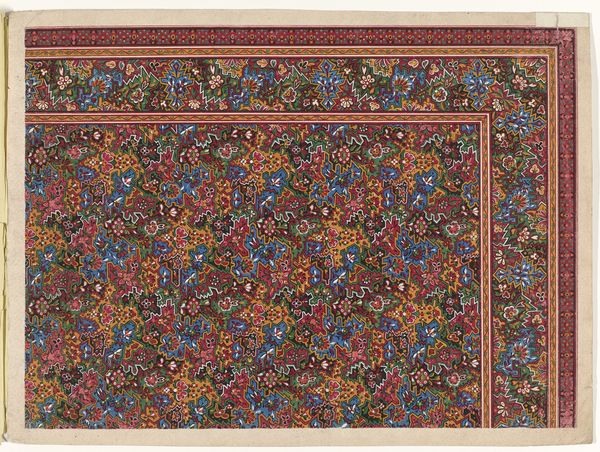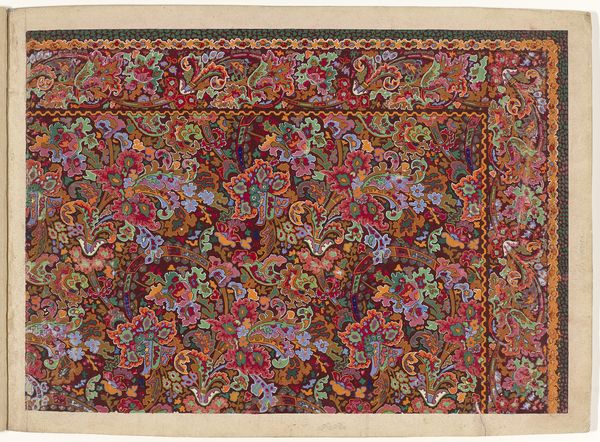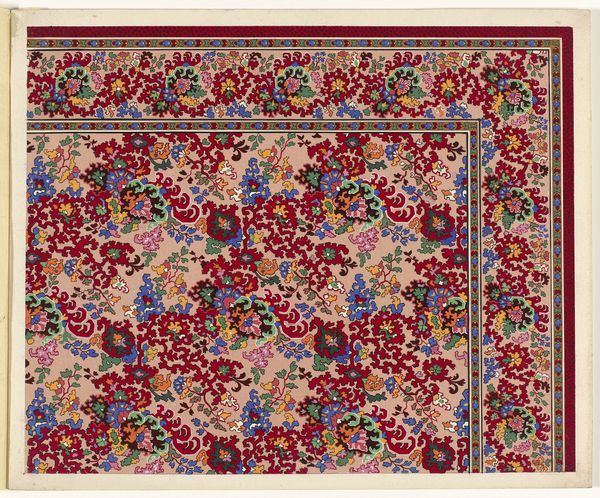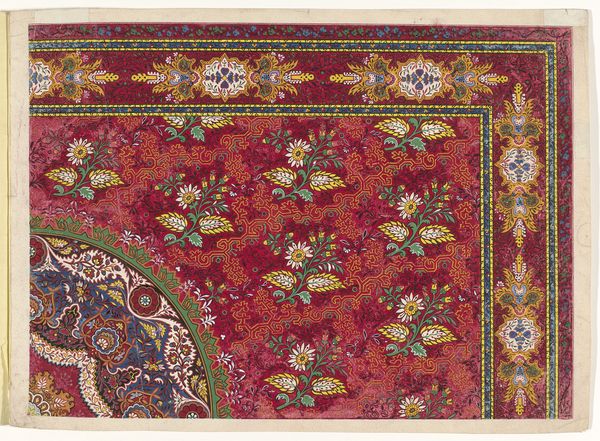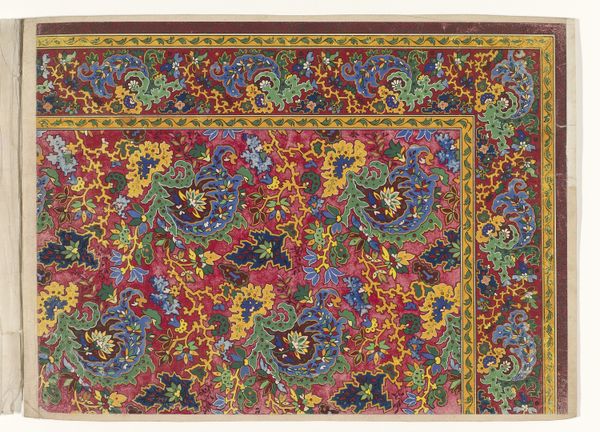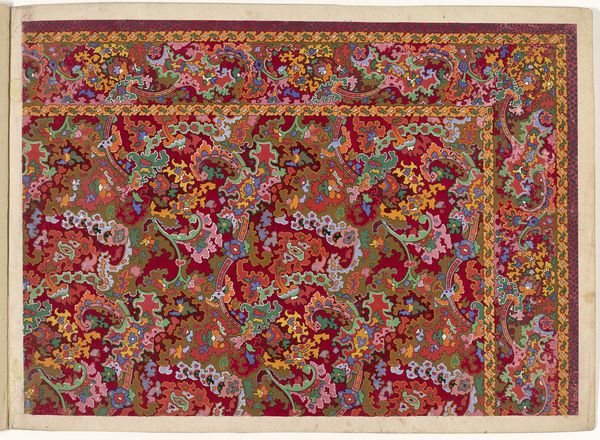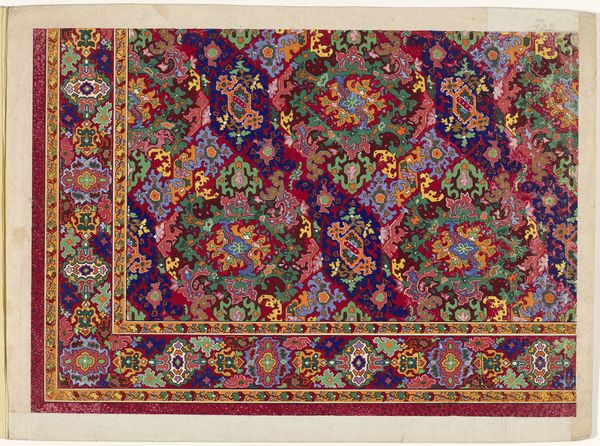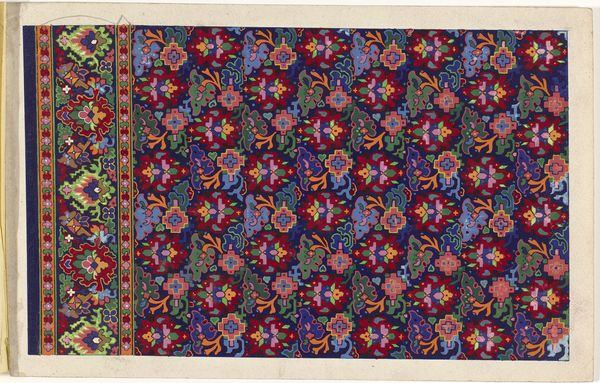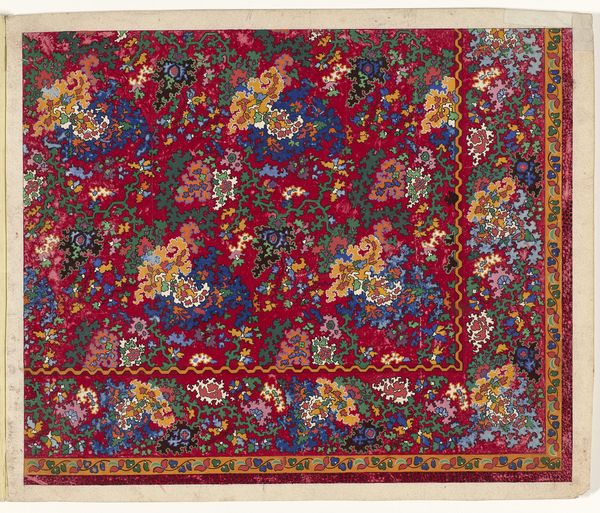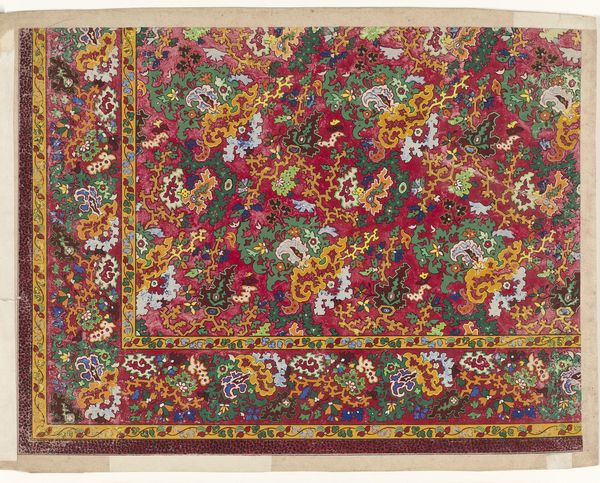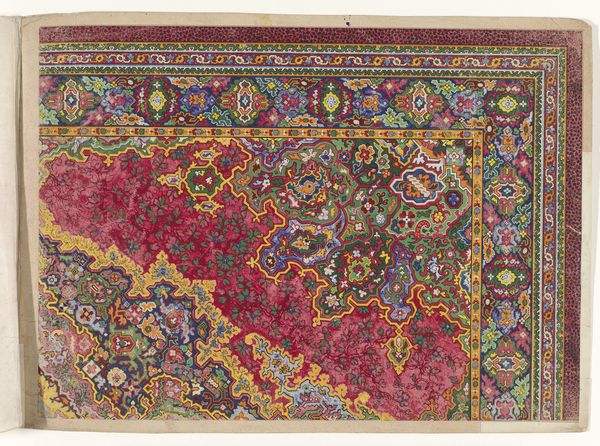
painting, paper
#
organic
#
painting
#
paper
#
geometric pattern
#
pattern background
#
organic pattern
#
geometric
#
decorative-art
Dimensions: height 384 mm, width 284 mm
Copyright: Rijks Museum: Open Domain
Editor: This is a design for a carpet from between 1854 and 1864, its maker currently anonymous. It seems to be made using mixed media, maybe paint? It's just so intricate; the patterns feel both geometric and organic at the same time. What’s your take on this, especially thinking about its historical context? Curator: Looking at this design, I'm immediately drawn to consider the labour involved in producing a carpet of this complexity during the mid-19th century. It is not only about aesthetics, but how social class defined the production and accessibility of art. Consider the materials: What was available then? Where did they come from, and who was involved in acquiring them? Editor: So you are looking at this from the supply chain, you might say? Curator: Precisely! And how that impacts its status as an art object versus a craft object. This "design" sits on the boundary. The production method itself becomes the message. I am also interested in how domestic labor was changed through use of a textile such as this. Did its decoration inspire craft work by women, or act as a display of capital and trade networks that took such skills from homes to factories? Editor: I never considered the socio-economic implications within what feels like a harmless pattern. Were there certain materials or dyes that would denote wealth in carpet design? Curator: Absolutely. Natural dyes, for example, often required extensive labor and rare ingredients, impacting the cost and who could afford them. Think about the impact on industrialisation within decorative objects that were once seen as part of private life. Editor: This gives me so much to think about regarding the role of craft in a world of ever-increasing manufacturing! Curator: It shifts how we view art, focusing on process and materials, opening new avenues for exploring art's social and economic impact. It also forces a reframing, I believe, as design as its own form of artistic production.
Comments
No comments
Be the first to comment and join the conversation on the ultimate creative platform.
